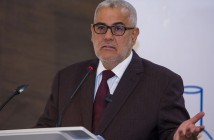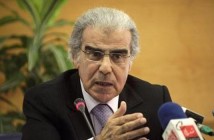By D.D. GUTTENPLAN
Fortunately, the organizers of the “Reinventing Higher Education” conference held here last week didn’t try to force the participants to come to any consensus. Instead, Santiago Iñiguez, the conference host and president of IE University here, seemed to relish his role as provocateur-in-chief, predicting that tuition fees would continue to rise, while the duration of academic programs would shrink.
MADRID — Will the university of the future be bigger — or smaller? Are college campuses still cradles of revolt — or merely marginal spectators to the Arab Spring? Should students expect to be trained for the job market — or is it more important to learn how to think?
“Rather than always talking about profits versus nonprofits we might talk about research universities versus big education retailers,” he said, adding that as global competition for students and faculty increased, successful universities would “grow by mergers and acquisitions.”
David Van Zandt, who became president of The New School in New York last month, disagreed, arguing that there would always be a demand for smaller institutions offering specialist teaching and expertise, giving the example of Parson’s, the New School’s art and design college. When Nigel Thrift, vice chancellor of the University of Warwick in Britain, suggested that there was only room for 50 leading research universities in the world, Mr. Van Zandt disagreed with him as well, suggesting that “a much smaller number” of research universities could expect to survive the combined pressures of shrinking public subsidy and growing global mobility. The increasing quality of online learning would also be a factor, he said.
“I apologize to anyone here from Nebraska, but there is no reason to teach introductory chemistry in Nebraska in a classroom with 500 students. Not when you can pump in, say, someone from Harvard” to give a video lecture to much smaller groups, Mr. Van Zandt said.
The conference participants, who included students, academics and university administrators from Europe, South America, Africa and the United States, also differed about the validity of university rankings. Connell Monette from Al Akhawayn University in Morocco complained that although Allal El Hajjam, a poet and one of his colleagues, “is known throughout the Arab world, that doesn’t register anywhere in the rankings.”
But Carlos Simonsen Leal, from the Getulio Vargas Foundation in Brazil, whose business programs are consistently ranked among the best in Latin America, said: “For us rankings are like going into surgery. We see them as an instrument to improve ourselves. We want to compete with the best in the world, even though we know we will never be Cambridge or Harvard.”
Nunzio Quacquarelli, founder of QS, the British firm that produces one set of global rankings, defended his business as “responding to a demand from students and their parents.” However he admitted that all such efforts depend on imperfect methods, and didn’t dispute Fulvio Orto, from Bocconi University in Italy, when he spoke of a high “noise to signal ratio” in the rankings.
Despite the frequent disagreements, the atmosphere at the conference, held on the campus of IE University, remained cordial. The sharpest exchange came during a panel on “Current International Developments and Globalization trends” when the moderator, Francisco Ramirez, a professor of education at Stanford University, called on a student in the audience. Noting that the panel members came from such elite schools as Brown; Bocconi; and Sciences Po, the Institut d’études politiques de Paris; Ana Proaño asked, “How do you think you can continue to improve higher education, since not many young people can pay your fees?”
Ms. Proaño, the local committee president of AIESEC, an international student-run organization based in Rotterdam, is a graduate of the University of Valladolid, which she described as “ordinary.”
That many universities end up failing their students was also a theme of the conference’s keynote speaker, Lisa Anderson, president of the American University in Cairo. Located right on Tahrir Square, the campus was frequently featured in televised reports from the Egyptian uprising. However, Ms. Anderson said that while her “university’s students, faculty and alumni were disproportionately visible in the revolution,” the academy as a whole remained peripheral to events in Egypt. “Why were universities not inspirations to participation or sources of rebellion?” she asked. “Why do we talk about the youth revolutions, or social media revolutions, but not the student revolutions?”
Ms. Anderson explained that Egypt’s public universities had been deliberately starved of resources during decades of dictatorship.
Contrasting the American University in Cairo, a private university that charges $22,000 a year and has long catered to the country’s “economic, social and intellectual elite,” with the University of Cairo, whose 200,000 students pay no tuition, Ms. Anderson said “the base salary of A.U.C.’s custodians is higher than that of many professors at Cairo University — and so they charge students for private tutoring and for the reading materials they prepare and assign, thereby ensuring that a university education is not actually free. Universities, and their faculty and students, are trapped in a vicious cycle of inexpensive, low quality and not very enlightening education.”
“So, university life in Egypt was not fertile soil for creativity, inventiveness, courage, engagement, debate — that is, for what we saw in the 25th of January revolution,” Ms. Anderson said. “But something must have been, because it appeared.”
And now her own university’s privileged position means “we have a chance to put our fingers on the scales a little bit — if we can demonstrate that we are deeply committed to democracy and prosperity in Egypt,” she said.
In an interview, Ms. Anderson pointed to the university’s new relationship with its workforce as an example of the kind of influence she hoped to wield. “Staff have become more assertive,” she said. “Everyone from the people who maintain the grounds to skilled lab technicians. We sat in a room and we did collective bargaining and it was spectacular.”
Both Lisa Anderson and Santiago Iñiguez stressed the relevance of the liberal arts and humanities in helping students cope with the complexity of modern life. IE, which was founded as a private business school at the end of the Franco era by Diego del Alcázar, a media baron who is currently chairman of the Vocento group, has gradually developed into a full-scale university. With another campus in Segovia, Spain, IE University now offers degrees in communications, social science, architecture and biology as well as numerous business degrees, including an executive M.B.A. with Brown that emphasizes the liberal arts.
Mr. Iñiguez warned that universities that failed to grow or specialize would disappear. “You either become Wal-Mart, providing a social mission at a reasonable price — or a boutique.”
The comparison with retailing comes naturally to Mr. Iñiguez, whose new book, “The Learning Curve,” argues that educators have a lot to learn from business — and from business schools. “Being a good professional is not just about passion or changing the environment or being disruptive. You have to be able to manage your work effectively. You know when architecture isn’t managed properly, because you have to pay way over budget,” he said in an interview.
“My guess is that one day management will be taught in primary schools, like math or reading,” he continued. When that happens Mr. Iñiguez has a nominee to join the pantheon of management gurus like Peter Drucker or Steve Jobs: Monroe Stahr, the eponymous hero of F. Scott Fitzgerald’s novel “The Love of the Last Tycoon.” A soft-hearted Hollywood mogul, Monroe Stahr, writes Mr. Iñiguez, “is a literary compendium of the qualities required by a successful manager.”






